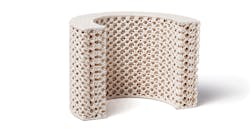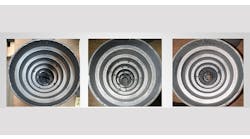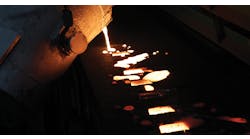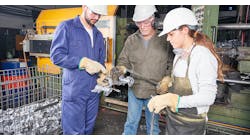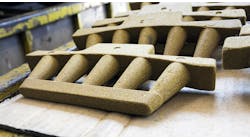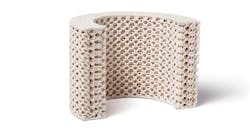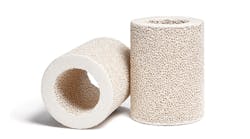Latest from Ask the Expert
As a result of this success, curiosity grew about further improvements for casting quality. What other metals could be filtered, for example? At that early phase of development though, filtration technology proved to be disappointing and one-dimensional. Filter composition was not yet able to accommodate heavier metals like steel and iron.
Nonetheless, casting demands increased and customers quality demands required industry suppliers to innovate. ASK Chemicals Hi-Tech LLC was the first to respond. Hi-Tech filtration engineers invented a ceramic foam filter made of high-purity zirconia that could withstand the extreme properties (high temperature, high pressure) of molten steel and iron.
This breakthrough technology only solved half the problem, however. Larger castings poured with high-density metal necessitated ceramic housing units that resisted sand or oxide inclusions. Thus, optimized housing designs are the second half of the ceramic housing equation. Today, filtration-engineers continue to seek a better answer to high-density filtration via filter and ceramic housing design.
The history of filtration-technology surely illustrates the endlessly complex world of metalcasting. When one defect is neutralized two more seem to be waiting to be revealed. That is the case in the question you have raised: Ceramic housing filtration units are extremely complex and require great attention to setup. The most common housings often feature multiple square filters situated within a modular round unit.
Technically this design is mostly right. The housing unit, along with its internal filters, should be cylindrical to accommodate the force of the high-density metal. Yet, this is not the significant problem; rather, it is that the face of the filter is flat. Consider: when a fast traveling liquid suddenly comes into contact with a flat surface the full weight of its impact will rest on that particular spot. If that spot cannot handle the impact it will fail/break.
The same is true for molten metal ramming into a filter. The filter cannot withstand the force, which causes cracks and/or pieces of the brittle ceramic filter to detach. This is also the reason that some metalcasters find oxide and ceramic inclusions (broken filters) inside their castings even when using a filter. Unfortunately, by the time you realize it these filter inclusions are already in your casting.
Fortunately, a better design is available. ASK Chemicals Hi-Tech LLC recently created the only cylindrical filter for large steel and iron castings. It features 3X greater filtration area, accomplished by its one-of-a-kind 360˚ design.
Durability is the hallmark of this new filter. For instance, the inlet / outlet diameter is 3 in., making for an extremely strong filter wall. Of course, the most significant aspect of this new offering is in its shape. The cylindrical design will withstand considerable force from the pressure of the pour because it can distribute the weight. Thus, breakage by force is essentially eliminated. Even the end faces are protected from breakage by an edge coating to ensure against leaks and breaks. This provides foundry operators with the assurance that their filtration practice is safe and efficient.
This new UDICELL™ tubular filter comes is packaged in its own customized ceramic housing unit, developed to seamlessly encase the filter to protect against metal by-pass. In total, the entire package is composed of only three parts: the ceramic housing, the tubular filter, and the lid. This incredibly durable and compact offering is easy to handle and assemble and only requires one filter per unit. In many cases, this single unit is all that is needed to filter several tons of steel and/or iron. Considering your situation this would certainly be a possible solution to your problem.
Join the Conversation. Email Your Questions for ASK Chemicals
Share your insights, opinions, and elaborate on the questions and the experts' answer(s). You must be logged in to the website in order to post your comments.
